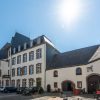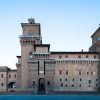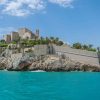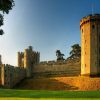Estense Castle
You will find in Ferrara a striking moated fortress known as Castello Estense, or Castello di San Michele. The Este dynasty constructed this fortress and later transformed it into a lavish Renaissance residence. Elegant balconies, frescoes, and palatial rooms softened its robust military architecture. What began as a defensive bastion evolved into a political and cultural hub. Towers, dungeons, and secret corridors await the visitor within its red-brick walls. The building stands today as a powerful symbol of Ferrara’s medieval and Renaissance past.
Location of Estense Castle
The castle is located in the center of Ferrara, in the Emilia-Romagna region of northern Italy. Its official address is Largo Castello, 1. A wide moat surrounds it, spanned by stone bridges that once functioned as drawbridges. The location, once on the edge of the medieval city, became central as the city expanded. This fortress remains a focal point, both visually and historically. Its four towers dominate the skyline and can be seen from many corners of the city.
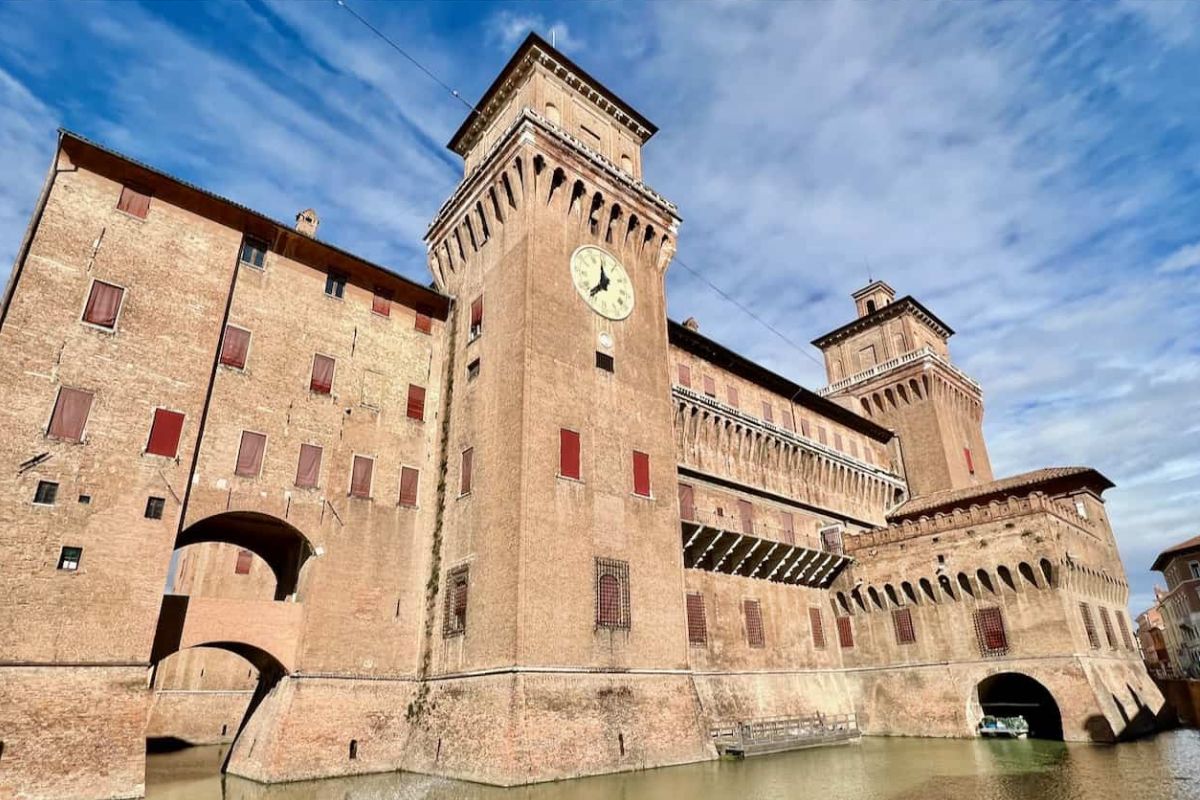
History of Estense Castle
The origins of Estense Castle date back to 1385. Following a violent uprising, Marquis Niccolò II d’Este ordered the construction of a fortress to protect the Este family. A pre-existing tower, the Torre dei Leoni, was integrated into the new structure. Three more towers, fortified walls, and a moat completed the initial design. A wooden passage connected the castle to the family’s residence, ensuring safety during unrest.
By the fifteenth century, the city had expanded and the castle’s military role diminished. Ercole I d’Este gradually transformed it into a courtly residence, introducing lavish apartments and decorative elements. After a fire in 1544, architect Girolamo da Carpi directed further renovations. Military features gave way to Renaissance elegance. Stone balconies and refined interiors were added, and private chambers were expanded along the covered passage, the Via Coperta.
In 1598, Ferrara came under Papal control. The castle became the residence of papal governors and housed offices, storerooms, and prisons. During foreign occupations in the eighteenth and nineteenth centuries, it served various administrative and military roles. Following Italy’s unification, the Province of Ferrara purchased the castle in 1874. It was then used for public administration.
Restoration efforts began in the early twentieth century and continued after World War II, when bomb damage required repairs. In the late 1990s, a major restoration initiative titled “The Castle for the City” was launched. This project aimed to preserve the structure and return it to cultural use. By 2004, the authorities had reopened many of the castle’s historic rooms and chambers to the public.
Today, Estense Castle stands as a preserved monument and museum. Its history reflects shifts in power, architecture, and cultural identity across six centuries.
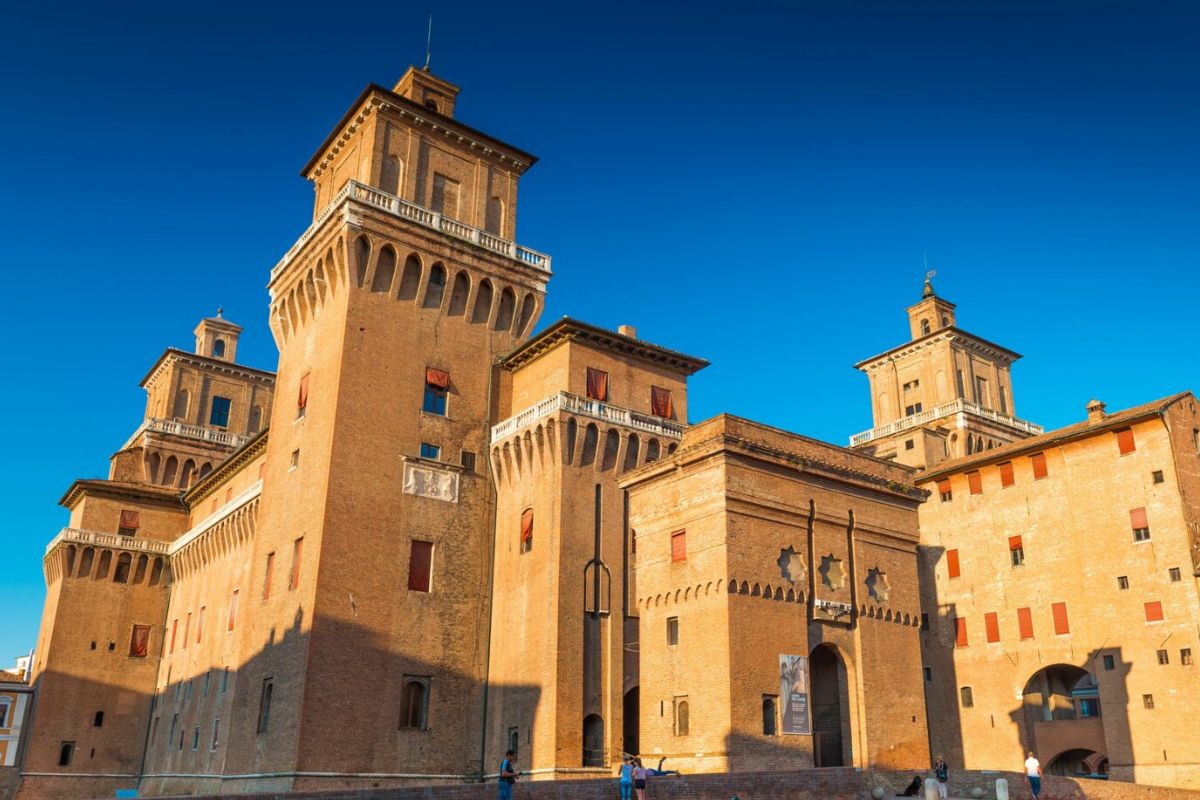
Current status
Today, local authorities preserve and maintain Estense Castle as a public museum and cultural landmark in the heart of Ferrara. They carefully restore it to ensure historical accuracy. The structure remains in excellent condition, with controlled visitor access protecting its delicate interiors. Most areas, including grand halls, frescoed rooms, dungeons, and private chambers, are open to the public.
Visitors may explore the central courtyard freely, admire the towers, and climb the Torre dei Leoni for panoramic views of the city. The Via Coperta and its hidden rooms illustrate the private life of the Este court. Educational exhibits guide visitors through the castle’s history, Renaissance art, and political legacy.
The museum is open daily from 10:00 to 18:00, except Tuesdays. Tower access closes one hour before closing. Entry is limited to protect the building, with special arrangements available for schools and guided groups.
Ongoing conservation uses traditional materials and methods to safeguard the castle’s structure. Attention to historical detail ensures authenticity. Castello Estense remains a vibrant place where centuries of art, power, and culture can still be felt. It is not only a monument but also a living testimony to Ferrara’s rich and layered past.
Admission
Community features
Castle features
Video
Location
Official website
Featured listings











